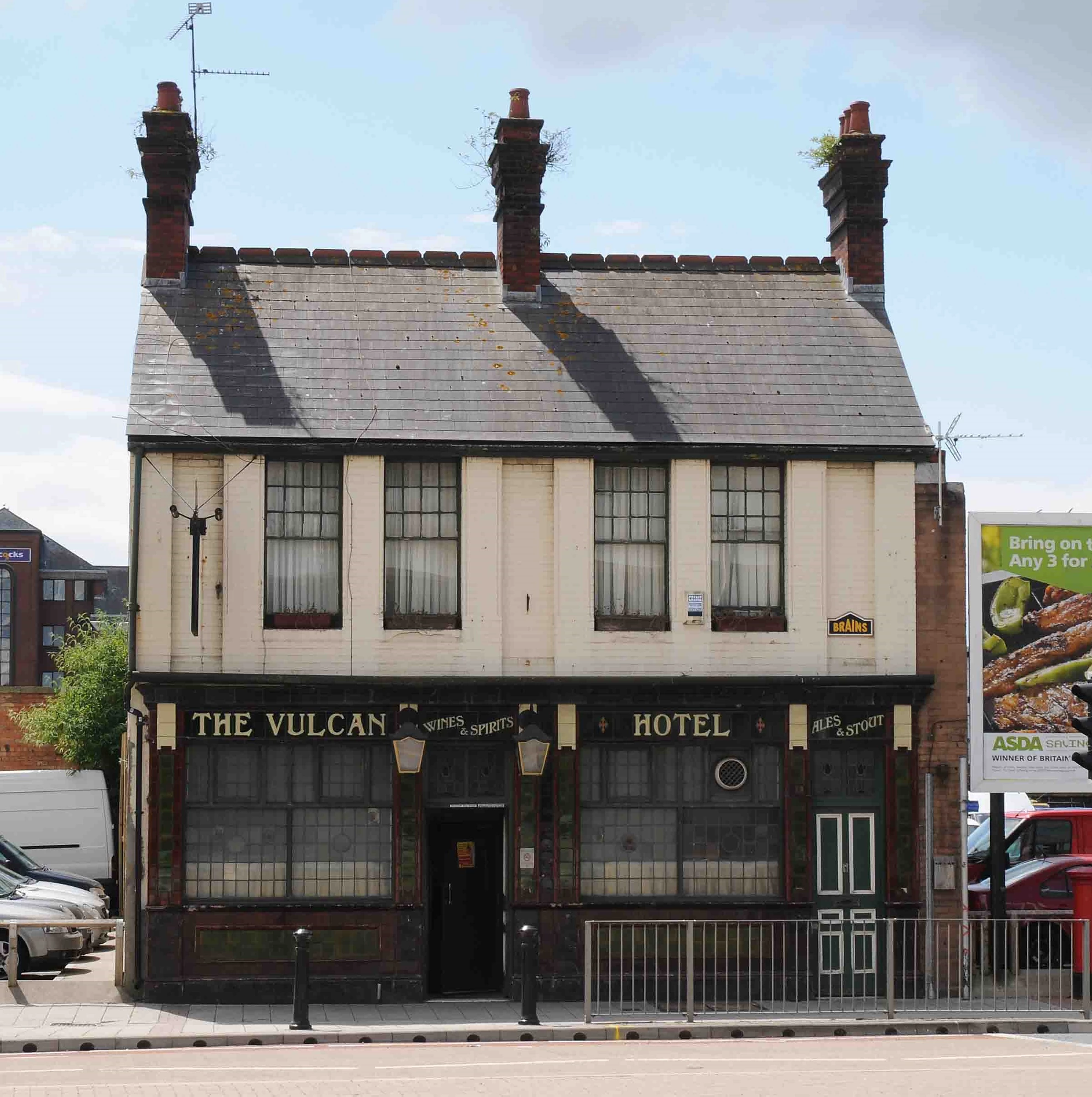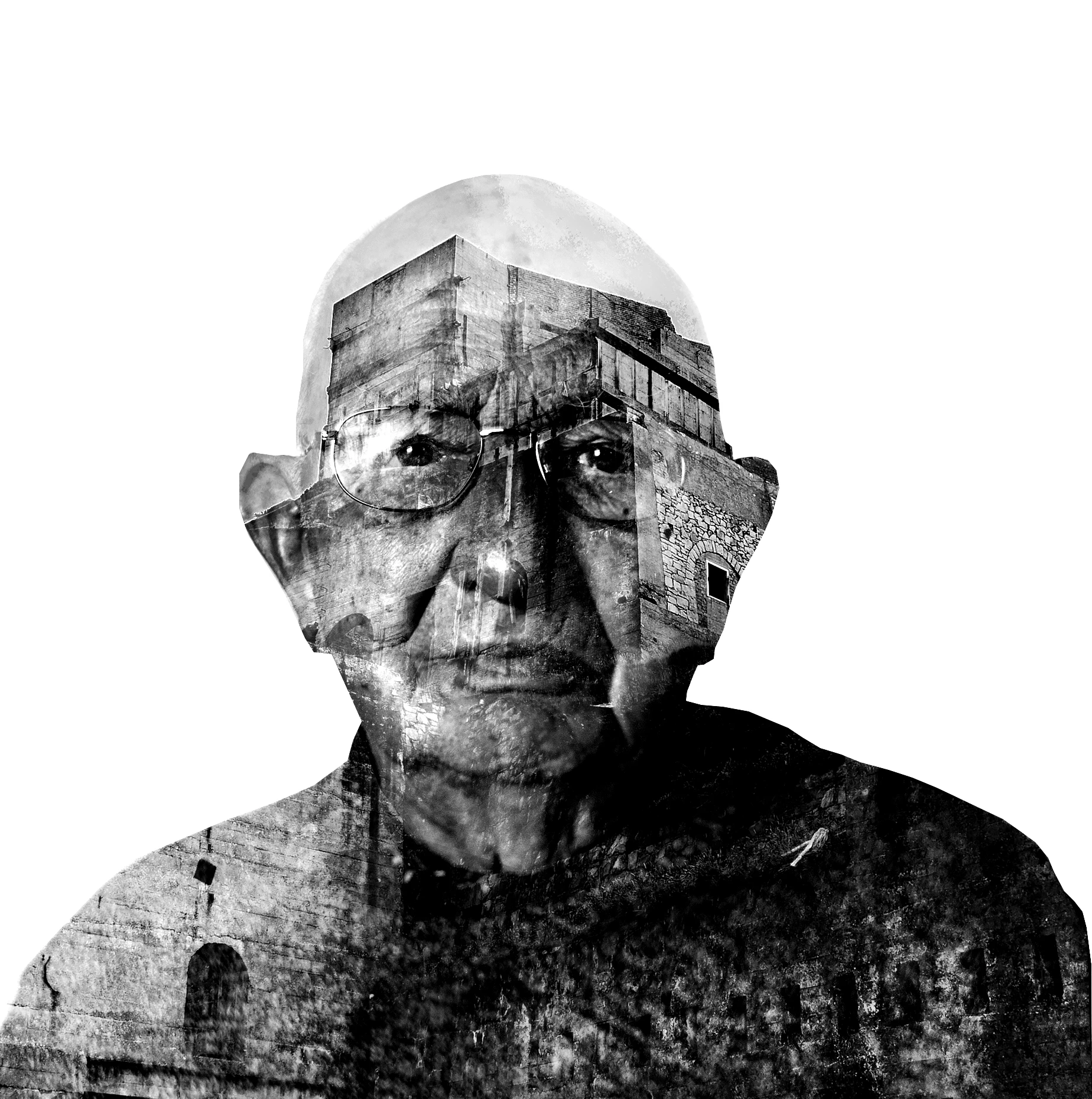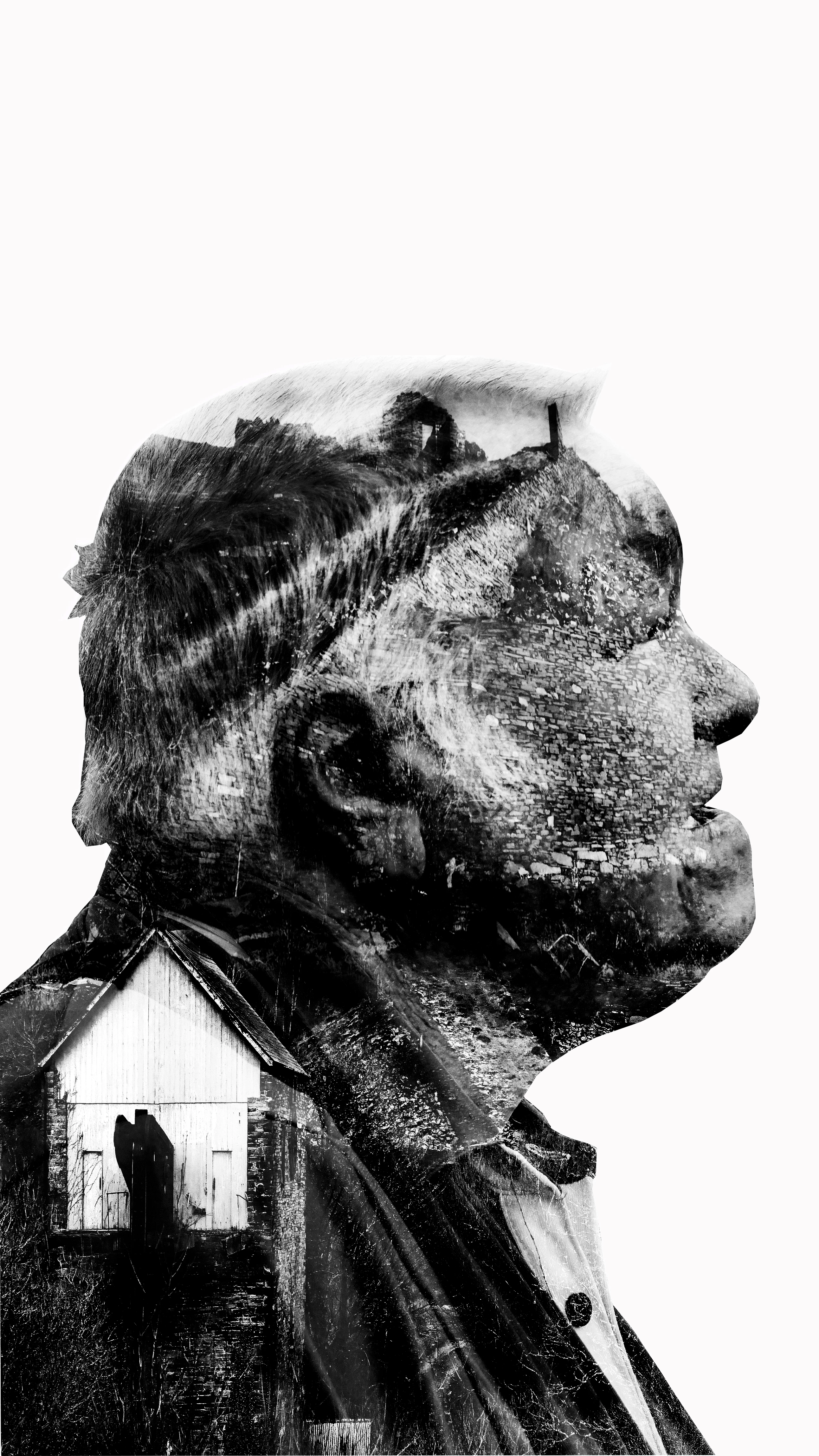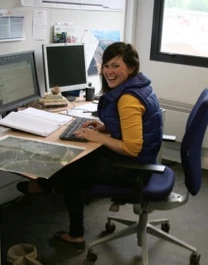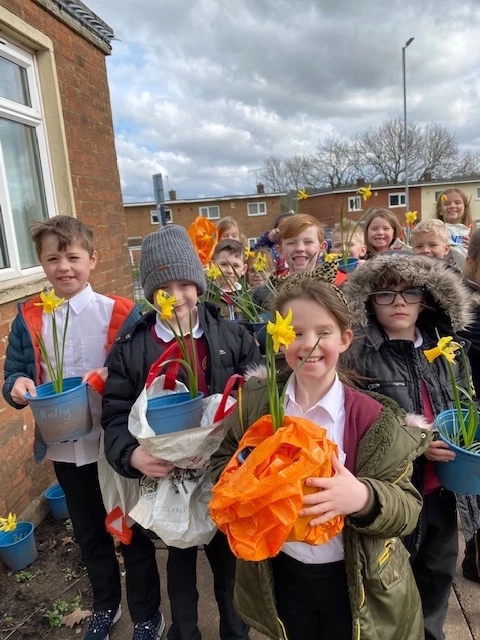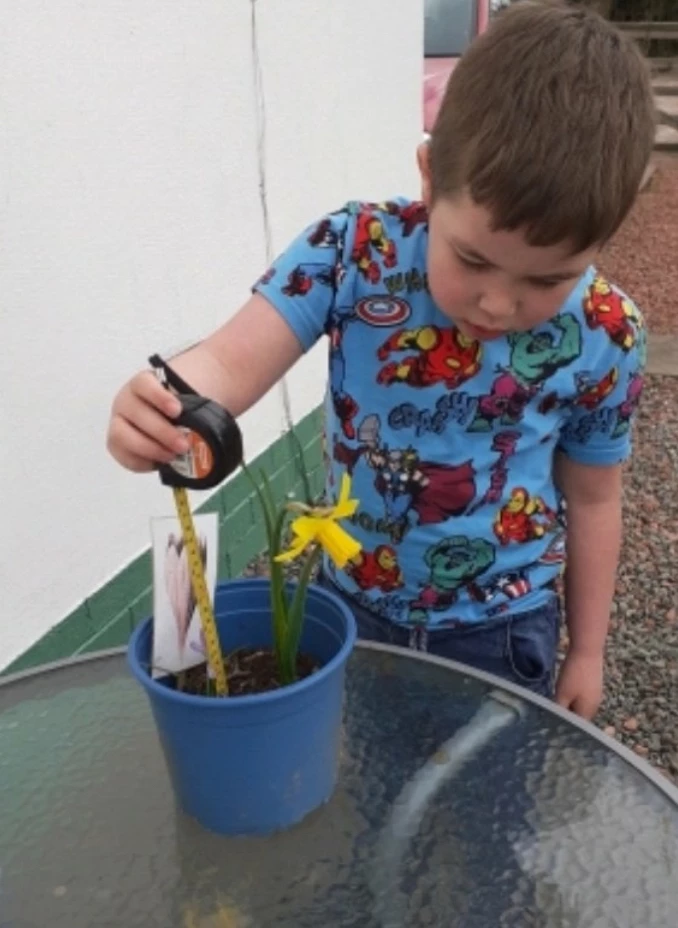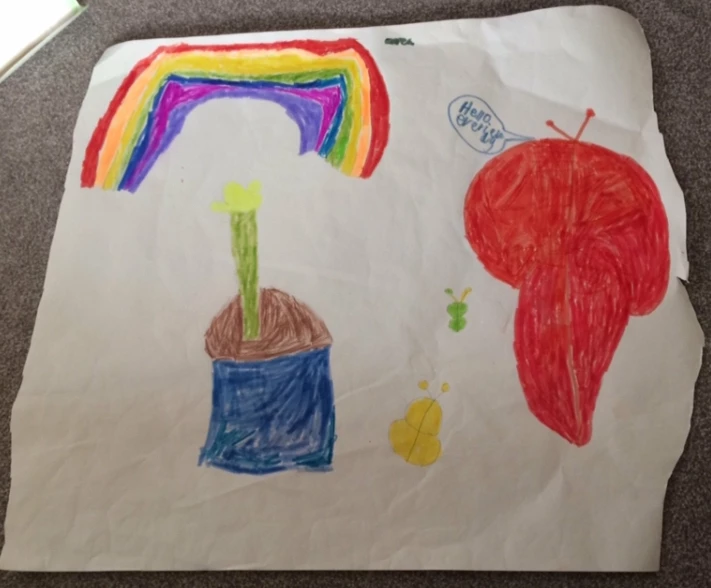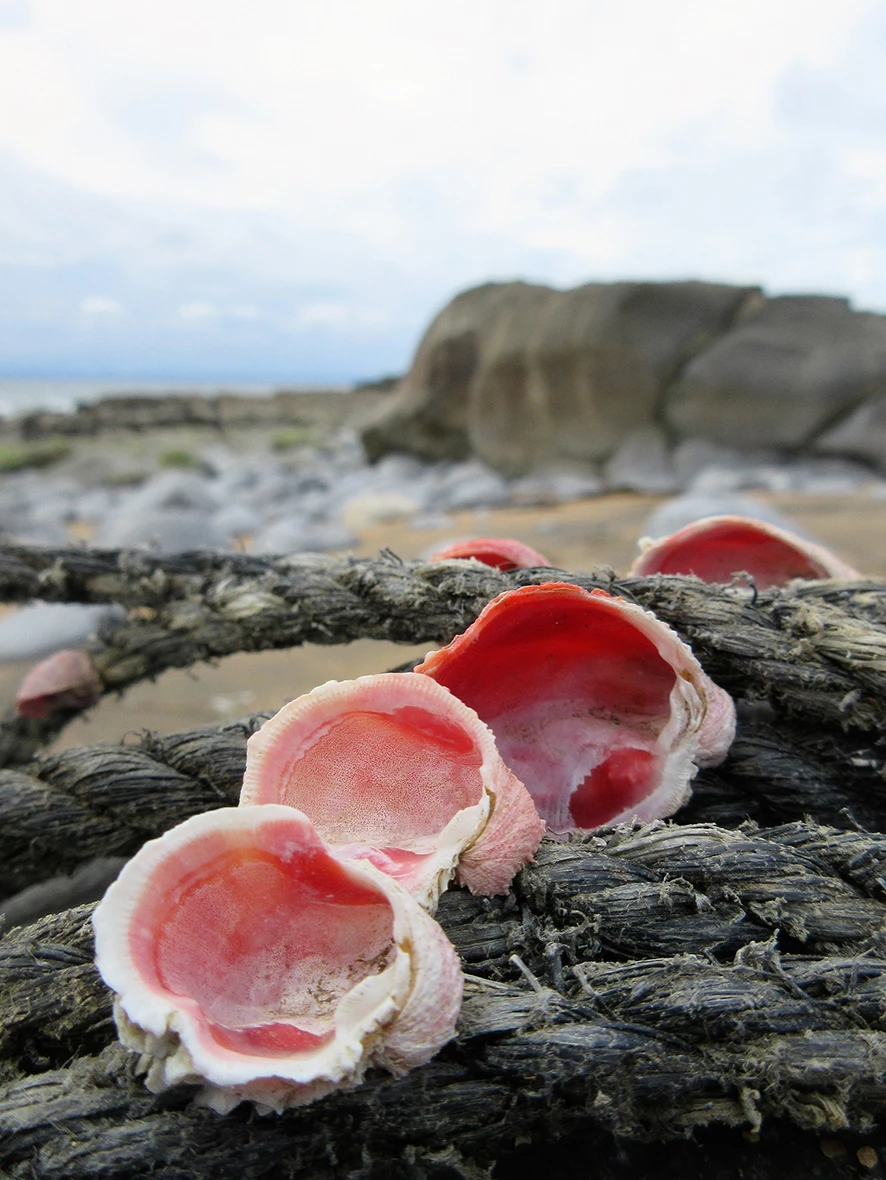Annwyl Gyfeillion y Gwanwyn,
Rwyf eisiau dweud diolch o galon am eich holl waith ar yr Arolwg Bylbiau Gwanwyn i Ysgolion. Wnes i fwynhau'r project eleni, yn enwedig y sylwadau gafodd eu rhannu efo'r data. Mae rhai o’ch sylwadau wedi eu hatodi ar ddiwedd y blog hwn.
Caeodd ysgolion yn gynnar eleni, ac rwy’n dallt fod hyn yn newid mawr i bawb. Rwy’n dallt ei bod wedi bod yn amhosib i rai ohonoch rannu eich data ar y wefan cyn i’ch ysgol gau. Rwyf wedi bod yn gweithio o gartref hefyd, caeodd yr Amgueddfa rwy’n gweithio iddi yr un wythnos â’r rhan fwyaf o ysgolion. Rwyf wedi bod yn meddwl amdanoch chi i gyd dros y cyfnod hwn.
Rwyf am barhau i sgwennu am y project ar y blog hwn ac ar Twitter. Yn yr wythnosau i ddod rwyf am edrych ar adnoddau a gweithgareddau fedrwch chi eu gwneud o gartref. Wythnos yma rwyf am awgrymu’ch bod chi'n creu llun o gennin Pedr a chrocws a dysgu sut i labelu gwahanol rannau o’r planhigion. Os ydych wedi gwneud y gweithgaredd yma o’r blaen, beth am ddarlunio planhigyn gwahanol y tro yma? Mae Ysgol St Mungo wedi rhannu lluniau o’r gwaith maen nhw wedi’i wneud o gartref, rwyf wedi atodi'r rhain ar y dde.
Mae adnoddau ar gael ar wefan Bylbiau Gwanwyn i Ysgolion. Rwyf wedi atodi amlinelliad o gennin Pedr a chrocws y medrwch chi liwio a labelu. Rwyf hefyd wedi atodi adnodd i greu llyfryn origami am fywyd bwlb. Os fedrwch chi, plîs rhannwch eich gwaith efo’ch athro neu efo Athro’r Ardd ar Twitter (@Professor_Plant).
Mae 'na hefyd lawer o adnoddau dysgu ar wefan Amgueddfa Cymru. Gallwch ddewis rhwng themâu gwahanol, o’r Rhufeiniaid a’r Celtiaid i gelf a deinosoriaid. I’w darganfod nhw, ewch i wefan addysg Amgueddfa Cymru. Bydd y dudalen hon yn dangos rhestr o’r saith Amgueddfa. Dewiswch Amgueddfa o’r rhestr, ac wedyn dewiswch ‘adnoddau’. Bydd y dudalen yn dangos adnoddau gwahanol yn dibynnu ar ba Amgueddfa wnaethoch chi ddewis.
Cafodd rhai ysgolion gyfle i fynd â’u planhigion adre efo nhw. Nid oedd hyn yn bosib i bawb oherwydd fod yr ysgolion wedi cau mor sydyn. Plîs peidiwch â phoeni am eich planhigion, fe fyddan nhw’n iawn.
Diolch eto am yr holl waith caled rydych wedi’i wneud ar yr arolwg hwn. Cofiwch wylio'r blog am ddiweddariadau Cyfeillion y Gwanwyn.
Athro’r Ardd
Eich sylwadau:
Sylwadau am ysgolion yn cau:
YGG Tonyrefail: Diolch am y prosiect eleni. Thank you for the project this year. Stay safe and well in the coming weeks. Professor Plant: Diolch, I hope you will take part again next year.
Hudson Road Primary School: This is the last reading we are able to send. We have loved taking part in the Bulb project. Professor Plant: Thank you for sharing your data Bulb Buddies.
St Julian's Primary School: We all took our daffodil pots home today on our last day at school for a while. Thank you for letting us take part once again. Professor Plant: I’m glad you were able to take your plants home and hope you will take part again.
Gavinburn Primary School: Our school closed on the 20th March and only 3 flowers had appeared from our daffodils planted in the ground. Professor Plant: Thank you for the update Bulb Buddies, it’s helpful for us to know that plants hadn’t yet flowered.
Dalbeattie Primary School: School is now closed but we are trying to keep records best that we can although they may not be as accurate. Professor Plant: Thank you Bulb Buddies, great work.
Henllys CIW Primary: All the flowers opened except mine and a spare one . Everyone's opened over the same weekends too. There was another spare one that opened so I took that one home instead. Professor Plant: I’m sorry that your plant didn't flower but am glad that there was a spare one for you to take home. Thank you for all of your work on the project.
Arkholme Primary School: This is the last day we are in school before it closes. Some of the flowers were broken in the strong winds and will not flower. Our teacher is going to check the bulbs when he is in school. Professor Plant: I’m sorry to hear the wind damaged your plants. Thank you for taking the time to update me on your last day in school and for all of the work you’ve done for the project.
Arkholme Primary School: The mystery bulbs are just beginning to bud. The sunniest week so far this year. The crocus flowers have started to open out in the sunshine. This is the last day to look at the bulbs as school is closing for the virus. Professor Plant: Thank you for this final update and for checking on the plants for as long as you could. You paint a lovely picture of your school garden.
Stanford in the Vale Primary School: Hi, This will be my last time submitting the weather data! After 3 years on doing it has finally come to an end! It has been fairly cold this week with not much rain! We won't be submitting it next week because school is closed! Thank you for the last time! Riley. Professor Plant: Dear Riley, thank you so much for the work that you have done for the project over the years. I’ve enjoyed reading your regular up-dates and wish you all the best. Remember to keep following the Blog for links to resources and to the end of project report.
St. Robert's Catholic Primary: This is our last week of weather results as our school closes today. Professor Plant: Thank you for updating me Bulb Buddies, and thank you for all of the great work you’ve done.
Darran Park Primary: Our weather has been a bit dryer this week. Unfortunately our class attendance has dropped continuously throughout the week and these children have not been able to check their plants. We have done this as best we could. Thank you for enabling us to do this project, we do hope that we will be able to do this again. Professor Plant: Thank you for taking part in the project and for updating me. I’m glad you have enjoyed the project and hope that you will take part again.
Sanquhar Primary School: Bulb pots taken home by the children left in school. Professor Plant: Fantastic, thank you.
Ysgol Bro Pedr: Take care of yourselves! Professor Plant: Thank you, and you Bulb Buddies.
St Fergus' Primary School: Our flowers are not far away from opening, the tops are very yellow but no flowers yet. Our school is now closed due to the Corona virus. Professor Plant: Good observational skills and description Bulb Buddies. Thank you for updating me, it’s very helpful to know that some plants hadn’t flowered when schools closed.
Sylwadau am eich planhigion:
Dalbeattie Primary School: Only green leaves- no flower formed - this is like several of our crocus bulbs. Professor Plant: I’m sorry to hear that not all of your plants flowered Bulb Buddies, this sometimes happens. I’m glad that the other bulbs flowered for you to enjoy.
St Fergus' Primary School: We have one crocus fully opened, a beautiful purple one, some more are just about to open. Professor Plant: Fantastic Bulb Buddies.
Carnbroe Primary School: 2020-03-05. The crocuses bloomed early March.We are still waiting on the other bulbs to flower. Professor Plant: Thank you for entering your data Bulb Buddies.
Sanquhar Primary School: We found our bulb bed had been burrowed into. We have replaced the bulbs. None of our bulbs in pots are showing anything yet. We have moved them to a sunnier position. Professor Plant: Thank you for the update Bulb Buddies. Do you have any ideas what might have been burrowing into your flower bed?!
Bryncoch CiW Primary School: I noticed a caterpillar on my daffodil. Professor Plant: Fantastic Bulb Buddies, do you know what type of caterpillar it was?
Llanedeyrn Primary School: I was shocked on how tall it had grown. Professor Plant: They do grow surprisingly tall!
Bursar Primary Academy: 3 of the planted crocus' never flowered. Numbers 1, 15 and 30. We believe this is because these were sheltered from sunlight and rainfall. The Crocus' opened between 24/02/2020 and 05/03/2020. The heights range from 31mm to 98mm. Professor Plant: Well done for thinking about why some plants might flower and others not. This can also be why some plants flower earlier than others.
Litchard Primary School: It shows the difference in temperature when we brought the crocus inside it opened within 10-15 minutes. Professor Plant: This is an interesting experiment to do, bringing one inside while the others are outside and comparing the flowering date.
Hudson Road Primary School: There were two flowers that had opened when I measured them they were both 90 mm tall. Professor Plant: Fantastic work Bulb Buddy!
Drummore Primary School: It is a small plant but its a step closer saving the world. Professor Plant: They are very small and delicate, but can teach us a lot about the natural world.
Drummore Primary School: They take a long time to grow. Professor Plant: They do, and you’ve been very patient caring for it since October.
Sylwadau am gofnodi data:
Our Lady of Peace Primary School: We are happy to send in data again. Professor Plant: Thank you for sharing your data Bulb Buddies.
Our Lady of Peace Primary School: Sorry we missed out a few weeks and a couple of days. As we said we are super sorry. Professor Plant: That can’t be helped, thank you for letting me know and for inputting the data you can.
Saint Anthony's Primary School: It was really exiting to check the temperature and rainfall. Professor Plant: I’m glad you’ve enjoyed the project Bulb buddies, thank you for all the work you’ve done.


